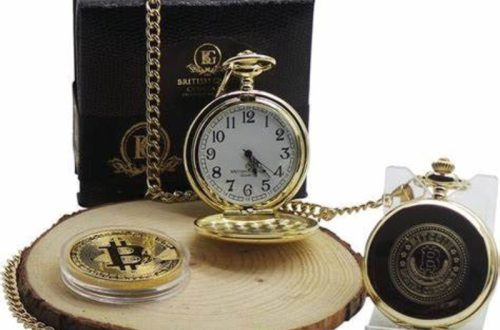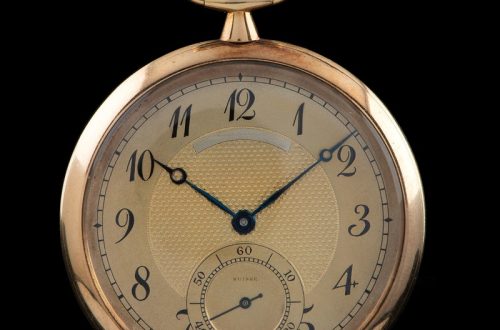Introduction to Mechanical Watch Diagrams
Mechanical watch diagrams can seem daunting at first. They display the intricate workings of a timepiece. Many enthusiasts want to understand these diagrams to appreciate the craftsmanship involved. Let’s dissect these complex illustrations together.
Mechanical watch diagrams show all the parts inside the watch. These parts work together to track and display the time accurately. The diagrams often accompany maintenance manuals. They help watchmakers during repairs or assembly. They can also be a tool for learners and collectors to better understand their watches.
A typical mechanical watch diagram presents a detailed view. It illustrates the movement, which is the heart of the watch. Each component, from tiny screws to gears, appears on the diagram. The layout shows how the parts connect and interact.
To navigate a mechanical watch diagram, start with familiarizing yourself with the key components. Knowing the basics, such as the crown, gears, and mainspring, makes it easier. With this knowledge, tracking the energy movement through the diagram becomes less challenging.
In this guide, you’ll learn about each part’s role and layout in a mechanical watch. With clear explanations, you’ll soon read these diagrams like a pro. Keep this guide handy as you explore the world of mechanical watches. Let’s dive into the key components next, and begin our journey into the hidden universe of mechanical timepieces.
Key Components of Mechanical Watches
Delving further into mechanical watch diagrams requires an understanding of its key components. Knowing what each part does will give you a clearer picture of how the entire watch functions.
The Movement
The movement is the engine of the watch. It drives the hands and powers any complications. Like a heart in the body, it keeps time ticking accurately. Mechanical movements rely on a sequence of gears and springs. They coordinate to create motion and measure increments of time. A well-crafted movement embodies the skill of watchmaking.

The Case
The case is the protective housing for the movement. It shields the delicate internal parts from dust, water, and impacts. It also contributes to the watch’s aesthetic appeal. Cases come in various shapes and materials, each with unique properties. They can range from classic stainless steel to luxurious gold alloys.
The Dial
The dial serves as the watch’s face. It displays the time through the hands and hour markers. It also presents other information, such as the date or phases of the moon in some designs. The layout of the dial can vary, affecting both function and style. Clear and readable, it’s designed to convey time at a glance.
Understanding the Gear Train
In any mechanical watch diagram, the gear train holds central importance. It consists of a series of gears, each engaging with the next, to transmit power from the mainspring to the escapement and, ultimately, to the hands that tell time.
The gear train begins with the main gear attached to the mainspring. From there, it powers larger wheels, making its way through the watch’s intricate inner mechanics. Every gear serves a purpose, either increasing or decreasing the power’s speed before passing it on. This ensures precise timekeeping.
Mechanical watch enthusiasts often marvel at the gear train. It’s a testament to the precision engineering that goes into creating a watch. When observing a mechanical watch diagram, the gear train is represented by interconnected circles and gears. Each circle’s size indicates its role in the sequence of power transfer.
As the mainspring unwinds, it releases energy. The gear train manages this energy, allowing the watch to tick accurately. Understanding the gear train can give insights into the watch’s accuracy and performance.
Here are key points about the gear train:
- It transfers energy from the mainspring to the hands.
- The gear sizes represent their role in power transfer.
- Accurate timekeeping depends on the gear train’s precision.
Mastering the complexity of the gear train helps demystify mechanical watch diagrams. With this knowledge, the operations within a watch’s casing become less of an enigma, unveiling the artistry of watchmaking.
Exploring the Escapement Mechanism
The escapement mechanism is a vital component in mechanical watch diagrams. It serves a crucial role. It manages the release of energy from the mainspring. This control allows the watch to keep time. Without it, the gears would spin uncontrollably, and timekeeping would fail.
The escapement does two main things. Firstly, it releases the gear train’s energy in measured increments. This happens each second. Secondly, it makes the ‘ticking’ sound we associate with watches. Each tick corresponds to a specific movement of the escapement.
In a mechanical watch diagram, the escapement is easy to spot. It is near the gear train and is quite distinct. The most common type is the lever escapement. It has a forked lever that interacts with a geared wheel called the escapement wheel. Each tooth of the wheel pushes the lever. This motion controls the energy release from the gear train.
Key features of the escapement include the escape wheel and the pallet fork. They work together to regulate the watch’s timekeeping. As the pallet fork locks and unlocks with the wheel, it keeps the watch ticking accurately.
Understanding the escapement mechanism reveals much about a watch’s performance. A well-made escapement ensures reliability and precision. It reflects the craftsmanship of the watchmaker. When learning to read mechanical watch diagrams, give special attention to this mechanism.
The Power Source: Mainspring and Barrel
The heart of a mechanical watch’s power lies in its mainspring and barrel. These components work together to store and release energy that drives the entire watch mechanism. The mainspring is a coiled spring that, when wound, stores potential energy. This energy is the driving force of the watch.

The barrel is the container that houses the mainspring. It has teeth on the outside that engage with the gear train. As the mainspring unwinds, it turns the barrel. This action transfers energy through the gear train to the hands of the watch, enabling them to move.
Understanding these parts is crucial to grasp the function of a mechanical watch. Here are some key points to remember about the mainspring and barrel:
- They are the primary power source for mechanical watches.
- The mainspring stores energy when wound either manually or via an automatic winding system.
- The barrel ensures the controlled release of energy.
- They are essential for the movement’s accuracy and longevity.
Recognizing the mainspring and barrel in a mechanical watch diagram is straightforward. They are often depicted as a long, tight coil (the mainspring), within a cylindrical shape (the barrel). A well-designed mainspring and barrel are key to a watch’s performance and reliability. The elegance of a mechanical watch begins with its ability to harness and manage the power within these components.
Functionality of the Crown and Stem
Moving beyond the watch’s core mechanics, the crown and stem play critical roles. The crown is the small, external knob on the side of a mechanical watch case. Users interact with it, often to set the time or wind the watch. It makes mechanical watches user-friendly and precise.
The stem is connected to the crown, extending into the movement. When the crown is turned, the stem moves. This interaction adjusts the watch’s hands. On the mechanical watch diagram, these parts can be spotted near the case. They are crucial for manual operations.
Here’s what to remember about the crown and stem:
- The crown lets users set time and wind the mainspring.
- It is the primary interface between the wearer and the watch.
- The stem translates the crown’s rotation into movement within the watch.
- These components are essential for the functioning and ease of use of a mechanical watch.
In essence, the crown and stem form the bridge between the wearer and the intricate workings of the timepiece. They enable the essential functions that keep the watch accurate and reliable. Understanding their place in a mechanical watch diagram adds another layer to your growing knowledge of horology. With the crown and stem, the user has the power to set, wind, and maintain their watch with ease.

Time Indication: Hands and Hour Markers
Moving to the surface of the mechanical watch diagram, we find the hands and hour markers. These elements indicate the current time to the wearer. The hands, which consist of the hour, minute, and sometimes second hands, sweep across the dial. They point to the hour markers that line the periphery of the dial.
Understanding the hands and hour markers is simple. Here are the basics:
- The hour hand shows the hour by pointing to the markers around the dial.
- The minute hand moves faster, making a full rotation every hour.
- The second hand, if present, ticks every second, showing precise time.
In a mechanical watch diagram, hands appear as thin lines. They may have various styles and lengths. The hour markers too can vary. They range from simple dashes to Roman or Arabic numerals, or even diamonds or other gemstones in luxury watches.
These features do more than tell time. They reflect the watch’s design and the brand’s identity. Elegant hands and well-crafted markers can speak volumes about the watch’s quality.
To sum up, the hands and hour markers are key for time indication. They are the most visual parts of a mechanical watch. They show the collaboration of all internal mechanisms working harmoniously to keep accurate time. With every tick of the hands, we witness the culmination of precision engineering.
Complications in Mechanical Watches
Beyond the basic function of timekeeping, mechanical watches can feature a variety of ‘complications’. Complications are additional functions that offer more than hours, minutes, and seconds.
Some common complications in mechanical watches include:
Chronographs:
These act as stopwatches, with buttons to start, stop, and reset.
Calendars:
They may simply display the date, or include day and month, or even be perpetual calendars accounting for leap years.
Moonphase Indicators:
This feature shows the phase of the moon as it appears in the sky.
Dual Time Zones:
A watch with this capability shows the time in two different time zones at once.
Each complication adds layers of complexity to the mechanical watch diagram. For example, a chronograph will have additional gears and levers in the movement. Understanding how complications fit into mechanical watch diagrams can deepen your appreciation of the watchmaker’s art.
The mastery required to design and integrate these features reflects advanced engineering. It also highlights the watchmaker’s dedication to combining functionality with aesthetic beauty. In a diagram, complications are illustrated by extra components layered over the standard movement layout.
To truly appreciate these marvels of watchmaking, it’s beneficial to study how complications are represented in diagrams. They indicate not only time but also human ingenuity and the heritage of horological craftsmanship.




